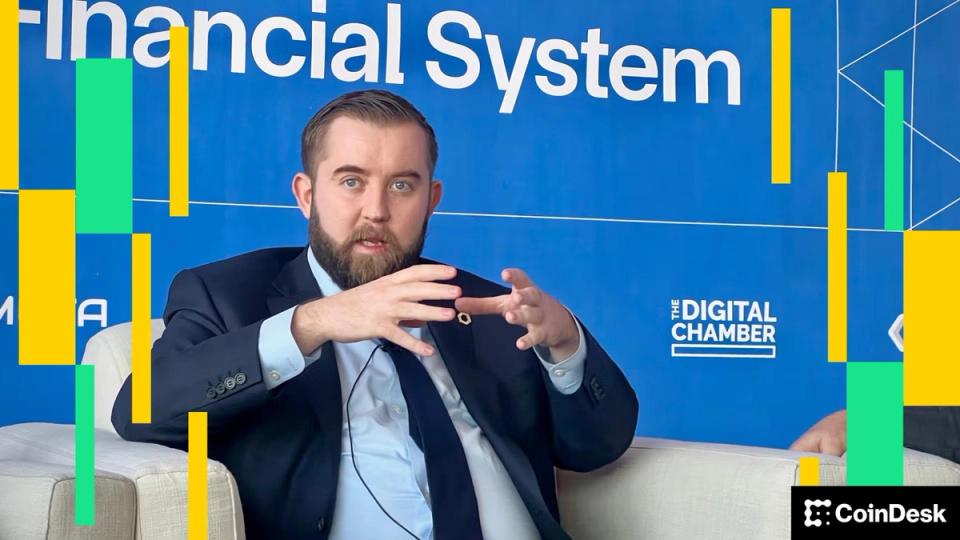Photo by Eduardo Munoz-Pool
Getty Images
In a strong response that echoes Brandolini’s law, Margot Paez, a distinguished fellow at the Bitcoin Policy Institute, shatters the facade of the United Nations University’s recent study on bitcoin mining. Her scathing critique, titled ‘Brandolini’s Law in Action: An Analysis of the United Nations University’s Bitcoin Mining’, is not just a scientific counter-argument; it is a call for intellectual integrity in academic research.
Under Paez’s careful lens, the United Nations University’s bitcoin mining study, once considered a comprehensive analysis of bitcoin mining’s energy consumption, now reveals a troubling pattern of oversight and disconnection from the established research body in this important field .
This disconnect highlights the relevance of Brandolini’s law, also known as the ‘Bullsh*t Asymmetry Principle’. In 2016, Williamson captured this concept clearly:
“The amount of energy required to disprove bullsh*t is an order of magnitude greater than that required to produce it.”
This principle highlights the significant effort and dedication Paez has dedicated to challenging and correcting the misinformation presented in the study.
Fueled by this principle, Paez’s analysis delves into the study’s selective bias, data misapplication, and flawed methodologies. She unravels the inherent issues in projecting past data onto future trends without considering the rapidly evolving nature of the industry.
The study’s reliance on outdated and discredited sources highlights a critical issue in academic circles: selective bias. This approach undermines research integrity, especially when it fails to incorporate the latest findings in the field.
Key developments in bitcoin mining, particularly its role in improving grid reliability and promoting the transition to renewable energy, are absent from their analysis.
Such omissions skew the study’s conclusions and mislead policymakers who rely on these findings to shape industry regulations. The study’s tendency to cherry-pick data points and perspectives reflects a broader issue in academic research, where groundbreaking advances and nuanced understanding are often sidelined in favor of more established yet potentially outdated narratives.
The study’s methodology raises serious concerns about its application in policy formulation. Without considering the dynamic and rapidly changing nature of bitcoin mining technology and its energy consumption, the authors’ projection of past data trends into the future leads to inaccurate and potentially misleading conclusions.
The lack of acknowledgment of the strike from key data sources such as the Cambridge Bitcoin Electricity Consumption Index further exacerbates the problem. Such flawed methodologies misrepresent the impact of bitcoin mining on developing economies and social justice and indicate a fundamental misunderstanding of the subject.
Based on these shaky foundations, the recommendation to switch from proof-of-work to proof-of-stake reveals a significant gap in understanding the intricacies of bitcoin mining and its environmental implications.
Paez highlights the study’s failure to consider newer research highlighting bitcoin mining’s potential to support grid reliability and promote renewable energy. Instead, they published in the American Geophysical Union’s Earth’s Future, based on historical trends and discredited sources.
Paez’s thorough investigation, while laborious and taxing, aims to set the record straight. She advocates for more transparent and collaborative research involving the renewable energy sector, the bitcoin mining community and researchers. Sound policymaking, she insists, must be based on robust data and cross-sector collaboration, not on isolated and flawed academic exercises.
Photo by Omer Taha Cetin
Anadolu via Getty Images
As the bitcoin mining industry matures, research and policy must adapt accordingly, ensuring a balanced understanding of the industry’s challenges and opportunities.
In a world with abundant energy resources, the focus of our discussion must shift. With bitcoin mining, we have the innovative tools to tap into these vast, often stranded or wasted energy reserves. Rather than focusing the conversation on reducing energy consumption, it is time to examine how we can effectively utilize the planet’s abundant energy resources.
This approach can transform the narrative from constraint to strategic use, using bitcoin mining as a key to unlocking the full potential of our global energy resources.
Technology is advancing at breakneck speed, and the truth of information is extremely important. Organizations like the Bitcoin Policy Institute will become increasingly essential. Thanks to academics like Margot Paez, we don’t have to trust; we can verify.
Follow me further Twitter or LinkedIn.
Disclaimer for Uncirculars, with a Touch of Personality:
While we love diving into the exciting world of crypto here at Uncirculars, remember that this post, and all our content, is purely for your information and exploration. Think of it as your crypto compass, pointing you in the right direction to do your own research and make informed decisions.
No legal, tax, investment, or financial advice should be inferred from these pixels. We’re not fortune tellers or stockbrokers, just passionate crypto enthusiasts sharing our knowledge.
And just like that rollercoaster ride in your favorite DeFi protocol, past performance isn’t a guarantee of future thrills. The value of crypto assets can be as unpredictable as a moon landing, so buckle up and do your due diligence before taking the plunge.
Ultimately, any crypto adventure you embark on is yours alone. We’re just happy to be your crypto companion, cheering you on from the sidelines (and maybe sharing some snacks along the way). So research, explore, and remember, with a little knowledge and a lot of curiosity, you can navigate the crypto cosmos like a pro!
UnCirculars – Cutting through the noise, delivering unbiased crypto news







